Top Of The Table – So You Want To Be A Dungeon Master, Part 2
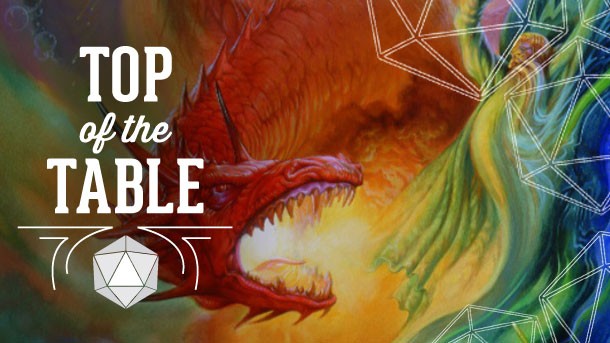
A few weeks ago, Top of the Table began a side trek from game recommendations and round-ups to offer up some tips for getting into role-playing games, and specifically how to tackle the job of being a Dungeon Master. The first step along the way is making smart choices before you ever sit down with your friends; that was the focus of this first installment, where I talked about recommendations for choosing a role-playing game, considering what your players want out of the experience, and suggestions regarding notes to prepare before your first session. Today, we’re continuing the series, and moving on to running the game in the moment.
You’ve gathered your friends around the table, everyone has their characters ready to go, and they turn to you to start up the action. What’s next?
Engage the Group
You can have the most meticulous notes, carefully planned encounters, and detailed maps ever sketched out on graph paper, but it’s all for nothing if you don’t pull your players into the fun. Think about ways to use showmanship, music, visual aids, and your own enthusiasm and storytelling chops to engage the players sitting at the table.
While preparation is great, don’t hide behind your notes and read text; that isn’t really communicating directly to your players. Make eye contact with individual players when they are asking you questions or telling you what their characters are doing. Use players’ names (or, if it’s your style, their character names) to address them one by one. Think about your storytelling as if you’re all gathered around a fire, and you’re launching into a great anecdote or ghost story.
Modulate your voice, especially when communicating NPC dialogue. Change your vocal range from quiet tones when creeping through a dungeon to louder expressions as you describe a sudden attack. Don’t be afraid to use your hands to accentuate ideas, or if using miniatures and a map, point to monsters and locations as things unfold. Be willing to alter your voice to get across the deep growl of a dragon, or the timid fear of a scared child. Accents (even bad ones) can make your players laugh and have a great time.
Consider the possibility of pictures and other visual aids to accentuate your descriptions. If you’re using a Monster Manual or similar tome of enemy creatures, show your players a picture of the monster they’re about to fight. If you’re describing an idyllic country valley of elven settlements, it’s a good bet you can pull up a piece of art online that roughly matches your description. Where possible, especially with major items or battle scene setups, consider physical objects that represent the objects at hand; that giant blue magical gemstone artifact is a heck of a lot cooler if you can pull a giant fake glass gemstone from under the table to show to your players.
Music sets a mood, and it can be a great way to add excitement and tension. If you’re just getting started, there are tons of online sources where you can stream catalogs of music. Alternately, consider starting a personal collection of tunes and playlists that are customized to the situation you might want. I have a collection of video game and movie soundtracks that are split out into playlists like “Fantasy Battle,” “Sci-Fi Action,” and “Horror” that I use to match the needs of my session. You can even subscribe to dedicated services (like Syrinscape) to access customized soundscapes for your games.
In short, use the tools at your disposal to help your players feel like they are witnessing a great cinematic adventure, and then connect with them individually and as a group to help them feel like they are inside that adventure.
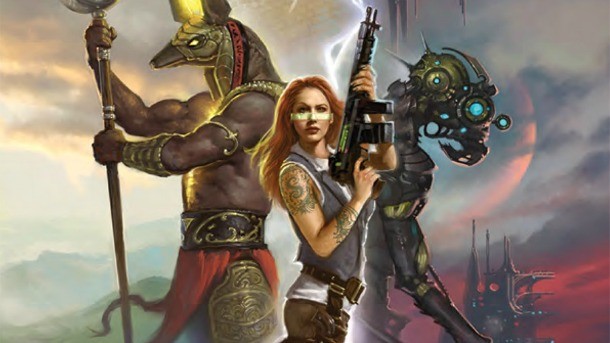
Unique character concepts should be encouraged, and games like The Strange do so naturally
Get Everyone Up To Speed
As you begin your first session, take a few minutes to set the scene. Remember, most of your players likely don’t know as much about the game and setting as you do, so it’s up to you to get everyone on the same page. At the same time, avoid the temptation to narrate for too long. Players want to get to the action, not hear you drone on and on. Keep the opening descriptions down to a few minutes, and then get the players involved in responding and making choices.
After your first session, I strongly encourage asking one or more of your players to take on the role of getting everyone up to speed by describing the events of the previous session. This serves two purposes. First, it ensures that everyone knows what is going on, even if one or more of your players may have missed the last meet-up. Second, it lets you see the unfolding story through your players’ eyes. Perhaps you thought you had dropped an essential clue about the necromancer’s whereabouts at the tail end of the last session, but during the recap, no one mentions anything about it; that lets you know that you need to find a new way to get that info to your players.
Yes, and…
Improv comedy uses the phrase “Yes, and…” as a way to encourage collaborative storytelling and receptive group listening. The basic idea is that once someone sets the terms of a narrative exchange, you want to follow-through on that initial premise, rather than changing directions. The same concept applies to good role-playing games.
Perhaps you’ve established a friendly neighborhood bartender NPC with a penchant for sarcastic commentary to the party members. You initially intended the character to be a fun jokester, but your players interpret the bartender as a mean stick-in-the-mud who is always insulting them and getting in their way. Go with it. By recognizing the ideas that your players latch on to, you can continue to develop that situation in a way that resonates with everyone at the table, even if it doesn’t exactly match with your original intent.
“Yes, and…” extends beyond dialogue choices. Listen to the ways that your players describe their character actions, and encourage them in the elements that work. If your buddy describes a complex acrobatic attack from his elven fighter, reward that effort and (after the dice are rolled) explain how his extravagant assault pans out in a grand success or a devastating failure. If a player has an idea that takes the action in a different direction than you expected, try to see where it goes.
Next Page: Give every player the chance to shine, and always skip the boring stuff
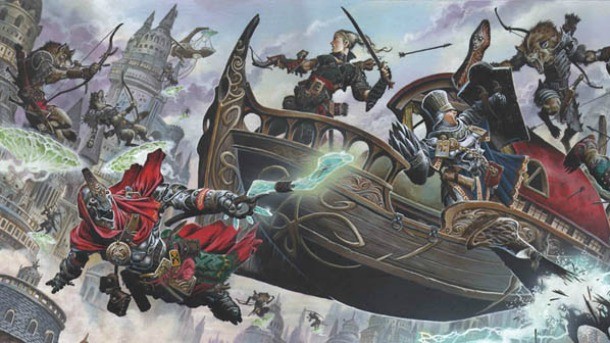
There's no shortage of great RPG settings like D&D's Eberron, which can help change up expectations
Avoid No…
The obvious counterpoint to “Yes, and…” is the single word you should avoid whenever possible: “No.” While it’s unavoidable that some situations are simply beyond the scope or common sense of the situation, it’s better to let your players attempt something than to deny them the chance to try.
“Can I leap from the palace balcony, swing from the chandelier, and land on the dragon’s head to stab him with my sword?” In most cases, the answer to that question should be: “You can try, but here’s what you’re going to have to do to succeed…” Great storytelling moments emerge from unlikely events, and great successes and failures can both lead to laughter and excitement.
At the same time, don’t let your desire to appease your players lead to unfairness or the game falling apart. Player characters are still bound by the rules of the game. A 1st level barbarian probably shouldn’t be able to lift off and fly to the top of a mountain, just because he says he can. Alternately, a barbarian who has taken one too many hits to the head, and is deluded into thinking he can fly? That might be the seeds of a fun character.
A Chance To Shine
One of the most challenging jobs of the DM is to give every character (and player) an opportunity to get what they want out of the gameplay. Different players often have different goals and playstyles that they find entertaining. For instance, some players won’t be happy unless they have a big combat scene, and other players have little interest in battles, and only really shine when they can have a great dialogue exchange. How do you account for both disparate needs?
The people who write about role-playing games have spent countless articles and books addressing this complication, and there’s no easy solution. But I can offer some guidance to get you started.
Pay attention to two things:
First, what can you tell from the character your player has created? The armored warrior with a gigantic two-handed sword is likely looking for one thing from your game session. The old sage with tons of skill ranks in ancient history and lore is looking for something different. Try to recognize both desires, and look for ways that both characters can have opportunities to capitalize on those specialties during the session you’re putting together.
Second, listen carefully to what your players say and do during the session, as well as watching their body language at different moments during the session. You’ll quickly begin to recognize what gets them excited, and then subsequently look for ways to elicit that same fun in subsequent encounters and in-game situations.
Remember, above all things, your chief responsibility as a DM is for everyone (yourself included) to have an opportunity for engagement and fun. Do your best to recognize that different players find fun in different ways.
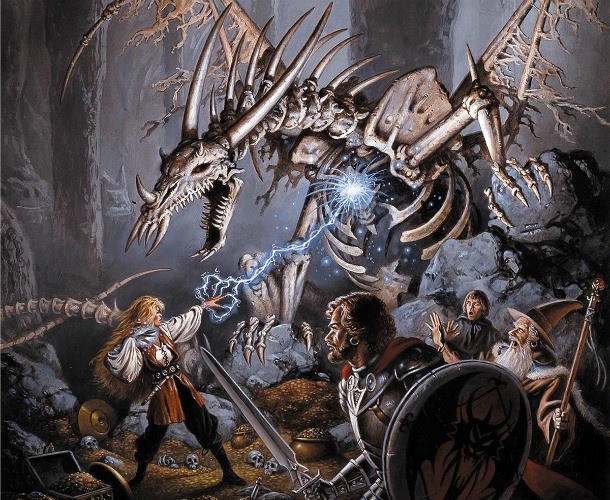
Avoid fixating on inconsequential situations, and focus on big dramatic encounters and decisions
Skip The Boring Stuff
Beginning DMs can be tempted to narrate and describe every moment or situation that the PCs encounter, or demand that players make meaningless choices about what is happening in every moment. Think about the best movies, comics, or novels, and you’ll recognize that one of the most powerful narrative tools is leaving uninteresting elements out.
If the demonic portal is a three-day march through a peaceful forest, don’t be afraid to gloss over those three days in a single sentence of narration. Alternately, if the forest is secretly filled with vengeful dryads who blame any trespasser for the demons’ transgressions, then that might be the plot for an entire evening of play. The point is that you as the game master recognize what makes for engaging content, and skip over the rest.
A good rule of thumb? If a section of the adventure ahead includes an extended sequence where the players won’t participate, make choices, or confront a challenge? Skip it.
On a more granular level, the same goes for individual challenges and encounters. Save dice rolling, testing an ability, or demanding a decision for things that really matter. Don’t make your PCs roll a Dexterity check to leap over a three-foot hole.
Next Page: Adapting to the unexpected, and relying on your players to share the burden
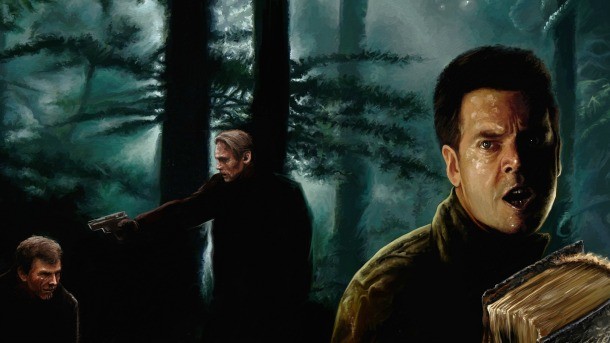
Horror and investigation-themed RPGs like Delta Green demand a different approach to pacing
Go With The Flow
I wrote briefly on this point in the last column about prepping your session, but it bears repeating; your players will inevitably throw you a curve ball, and you are going to have to shoot from the hip to keep the narrative and action moving forward. This is not a bad thing! Instead, it’s the one thing that tabletop RPGs can do better than any other medium – adapt to any possible outcome, decision, or dramatic left turn by the main characters.
Before I start each session, in addition to my normal preparation of monster stats, dialogue, and other notes, I also will often write down a thesis for the session. This is my single guidepost sentence for the coming hours of play, such as: “The party uncovers the truth behind the baron’s lies and secret identity, fights his minions, and descends into the dungeon beneath the castle.”
Contrary to appearances, that sentence does not mean that those events will unfold in the session at hand. Rather, it is what I’m expecting to happen given my best guess at my players and their likely path, and it gives me concrete things I can prepare ahead of time. If the players instead opt to befriend the duplicitous baron and accept his invitation to a secret meeting deep within the dungeon, I can adapt the session to achieve similar (if perhaps not identical) narrative progression.
Accept the shifting scenario as the protagonists (your players) alter the expected outcome, and everyone will have a good time. Develop your improvisation skills; you will get better with practice.
Fudge It
Remember that there is no referee hanging over your shoulder, dictating what you’ve gotten right or wrong. This is your game session, and you are entitled to run it as you see fit.
Ignore rules that slow down or halt the fun for you and your group. Don’t remember how the penalty for shooting an arrow at a figure behind partial cover? Make an executive call, and then get on with the session. For important rules distinctions, it’s not a party foul to pause for a moment and check the book, but make it fast and then resolve the dispute as you see fit. If a player objects, let them know that you made the call in the name of keeping the action moving; most gamers will accept the need to gloss over details in the name of progressing the game.
For more dramatic changes to the rules that match your playstyle, try to let your players know in advance. These “house rules” are commonplace for many experienced DMs, and let you cater your game to what you find most compelling. For instance, I often use an abstraction of experience points and have my PCs pass at narrative milestones, rather than through an accumulation of a point tally. That’s a big enough change from the structure of most RPGs that I owe it to my players to inform them before the game starts.
Finally, the fun of the scenario outweighs the importance of abiding by chance. While the roll of the dice can and should sometimes lead to dramatic turns of fate, don’t let a bad roll derail your whole campaign. Accept the need to sometimes fudge over a bad roll, or even better, come up with a narrative reason to allow for a reroll. When the heroic rogue misses her acrobatics check and tumbles from the cliff, who is to say there’s not a tiny handhold she can grab a few feet down? Sometimes, that character should be allowed to fall, but at other times, a good DM knows when to step in and offer a lifeline. Learn to recognize the difference, and don’t overuse your power.
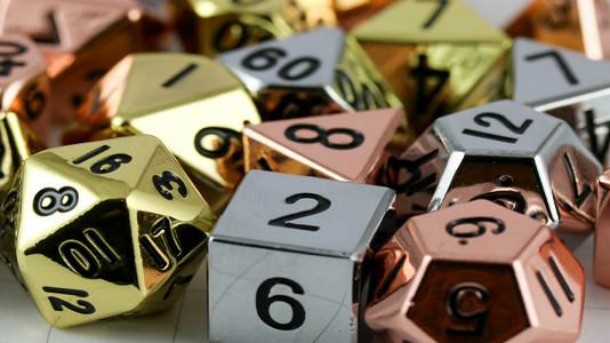
Don't let dice roll results ruin your game
Keep All The Balls In The Air
DMing a good role-playing session often comes down to keeping track of a lot of things at once. The essential story reveal needs to happen in the middle of the big fight. The orc horde will show up in ten rounds, but in the meantime, the characters must deal with a locked door, even as they discuss the cryptic riddle on the wall. One of your players is spoiling for a fight, and the other one is bored because he hasn’t gotten to act out his goofy dwarf’s drunk antics in too long.
Keeping track of monster stats, maintaining story cohesion, ensuring players are engaged – it’s a lot to keep track of! My advice? Give yourself a break. Accept that in most sessions, you might forget to hand out treasure after one of the encounters, or that one or more of your players is going to be exhausted from work or class, and totally disengaged from the fun.
Instead of worrying about what’s going wrong, focus on having a good time and keeping the action moving forward, even when it’s going in an unexpected direction. Your players would rather have a raucous (if occasionally disjointed) adventure than a nervous DM friend who is paralyzed because things have spiraled out of control.
Stay calm, focus on the elements you can keep track of, and remember that the game can continue to unfold even if you make a few mistakes.
Team Effort
Here’s a big secret to success as a DM; the players want you to succeed! They want to be involved in a fun story, see their characters do awesome things, and go home at the end of the night having laughed and told a fun adventure story with their friends. Count on that good will and shared enthusiasm to fuel your approach to play.
Rely on your friends to help make the game better. If you’re having trouble, ask them to participate in tracking the initiative order during a fight. Are they frequently derailing your carefully curated adventure plans? Let them know that’s the case, and see if they’re willing to curtail their most extravagant deviations from the narrative. Is one of your players consistently disengaged and holding back the fun? Gently question if they’re having a good time, and what you can do to help them have a better time. Be willing to recognize that role-playing games (or even a particular game or style of play) won’t be for everyone, and it’s okay if a player is ready to step away from playing with the group.
Longtime RPG players and DMs know that game mastering is a surprisingly deep and complex activity, and like any skill, it takes a lot of practice to master. Moreover, every DM has his or her own style and approach to the game, and it can take years to hone in on what you like, how you approach play, and how you adapt to meet the needs of different players and game systems.
Keep at it! Running a great role-playing campaign can be tremendously rewarding, and a great way to deepen friendships and create lifelong memories.
If I can’t sell you on the fun of trying out role-playing games for yourself, consider checking out the Top of the Table hub by clicking on the banner below. You’ll find tons of board, card, miniature, and role-playing game recommendations to enjoy with your friends. And if you’d like some personalized advice on either running your own role-playing game, or simply a particular tabletop game that’s a good fit for your family and friends, feel free to drop me a line via email or Twitter; I’m always happy to offer some recommendations.


Get the Game Informer Print Edition!
Explore your favorite games in premium print format, delivered to your door.
- 10 issues per year
- Only $4.80 per issue
- Full digital magazine archive access
- Since 1991









